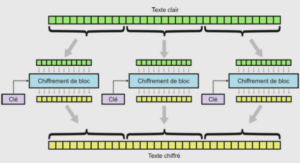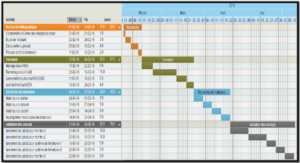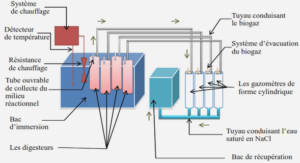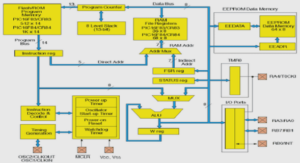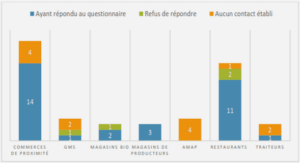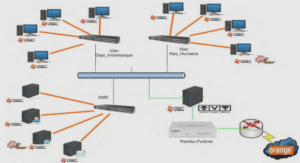Introduction to Multi-cell Beamforming Design
The downlink of a cellular system has been a widely researched topic in the past decade both in the isolated single cell processing scenario [36] and the joint multi-cell processing scenario [37, 38, 39]. It has been well established that significant performance improvements can be obtained if the BSs coordinate by CSI and user data sharing via high-capacity backhaul links (network MIMO) and jointly serve the UTs [37, 40]. However, as the number of antennas on the BS, the number of UTs and the number of coordinating cells grow large, this approach quickly becomes impractical due to the heavy backhaul requirement. Hence, there has been emphasis on developing distributed strategies that exploit only the locally available CSI. Our focus of the multi-cell beamforming design of this chapter is primarily based on the coordinated beamforming approach [41, 42, 43] in which BSs formulate their beamforming vectors taking into consideration the inter-cell interference. However, unlike the case of network MIMO, no exchange of user data information takes place between the BSs. Coordinated beamforming can be considered as a mid-way between network MIMO on the one hand and single cell processing on the other hand. Some of the relevant works based on joint multi-cell beamforming (without user data sharing) include [44, 45, 46, 47] in the multiple input single output interference channel (MISO IC) scenario. Other relevant references which consider joint beamforming with limited information exchange between the BSs include [48, 49]. Reference [42] provides an optimal algorithm for the multi-cell beamforming problem where each BS is serving an arbitrary number of UTs. Here, the design objective is to minimize the total transmitted power satisfying the SINR constraints of the UTs. In order to compute the optimal beamforming vectors, the BSs must solve an algorithm for every channel realization and then exchange this information between themselves. All this has to be done within a given coherence interval. Such a strategy demands high computational ability and rapid information exchange between the BSs, especially in fast fading scenarios. In order to overcome the heavy backhaul requirement, we propose in this chapter, an alternative approach to compute multi-cell beamforming vectors. In our algorithm, the BSs compute and exchange parameters at the time scale at which the channel statistics change rather than the instantaneous channel realizations. We use tools from RMT to formulate our algorithm. Before we proceed, we remark that RMT has been extensively used in analyzing the performance of communication systems. The most attractive feature of RMT results is that it provides compact and elegant expressions which are much easier to analyze than the expressions obtained from finite dimensional analysis. These results often provide good approximations for finite dimensional scenarios. Such results have been exploited in many works. To name a few, the analysis of CDMA systems [50], analysis of linear multi-user receivers [51, 52], sum capacity analysis of MIMO systems under various channel model assumptions [53, 54, 55], optimizing the training time for network MIMO systems [56] and linear precoders [57]. For a detailed survey of results regarding RMT results applied to communication systems, the reader can refer to [58] (Chapter 11). In contrast to the many previous works in which RMT is used as a tool for the performance analysis of the system, in this work we use RMT to optimize the system design parameters (transmit beamforming vectors). Before we proceed, we would like to place the contributions of the algorithm developed in this part of the chapter in the context of the existing works. The multi-cell beamforming strategy involving exchange of parameters based on channel statistics was first proposed in our related work [59] using tools from RMT. It was shown with the help of simulations that such an algorithm performs well for practical system dimensions. The theoretical analysis regarding the asymptotic optimality of such an algorithm was an open question. The authors in [60] developed multi-cell beamforming algorithms based on the same idea and made arguments about the asymptotic optimality of the same. How ever, they consider a two cell Wyner model and symmetric SINR constraints for all the UTs. In this work, we prove the asymptotic optimality of the RMT based distributed beamforming algorithm for a cellular network model with distance based path-loss model. Our main contributions in this part of the chapter are as follows:
We propose a reduced overhead multi-cell beamforming algorithm. In our algorithm, the BSs require only the local CSI (the channels from the given BS to all the UTs present in the system). The BSs compute parameters that depend only on the channel statistics which they exchange between them to compute the beamforming vectors. Additionally, the BSs have to exchange these parameters only at the time scale of channel statistics rather than instantaneous channel realization.
Using a large system analysis, we provide by closed form expressions a lower bound on the feasible set of target SINR values for which the asymptotic downlink power minimization problem is feasible.
Further, we prove that this algorithm is asymptotically optimal in the sense that when the dimensions of the system become large, the performance of our algorithm perfectly matches that of the optimal algorithm proposed in [42]. Our results show that the reduced overhead beamforming algorithm provides a good performance for a system with 10 UTs per cell and 10 antennas per BS.
ROBF Algorithm – Discussion
Notice that the computation of the uplink power allocation in the ROBF algorithm depends only on the second order statistics of the channel matrix and not on the instantaneous CSI. This results in a tremendous reduction of the amount of information to be exchanged between the BSs. In a typical fast fading channel, the channel statistics do not vary rapidly where as the instantaneous channel realizations do. As an example, consider a multi-cell scenario with each BS having 8 antennas serving 4 UTs in each cell and assume that the channel statistics remain constant over 10 different channel realizations. In the CBF algorithm, the BSs have to exchange 320 complex channel coefficients to compute the optimal beamforming vectors during each time slot. However, in the ROBF algorithm the BSs only have to exchange 32 real numbers (the channel statistics) during the 10 slots. The price to pay for the reduction in information exchange between the BSs is that in the ROBF algorithm, the target SINR values are not met perfectly for every channel realization. In fact, for finite values of system dimensions, the achieved SINR in the downlink fluctuates around the target SINR. We will later demonstrate these fluctuations with the help of simulations results in Section 3.4.5. In the next subsection, we will show with rigorous theoretical analysis that the performance of ROBF algorithm perfectly matches the CBF algorithm when the number of antennas per BS and the number of UTs become large
Delayed Queue-length Information Exchange
Let us assume that a delay of τ < ∞ time slots is incurred while the BSs exchange the queue-length information. Each BS i now has perfect queuelength information of its local queues (Qi,j [t] ∀j) and the delayed queue-length information from the neighboring queues (Qn,k[t − τ ], ∀n 6= i, k). Note that our set up can be easily generalized to introduce different delays τn, ∀n 6= i corresponding to the queue-length information from different BSs. However, in order to keep the notations simple, we restrict ourselves to uniform delays (τ, ∀n 6= i).
CSMA based Scheduling Algorithm
A decentralized scheduling algorithm with throughput optimality characteristics is the CSMA based scheduling algorithm under SINR based interference model [101, 102]. However, we would like to mention at this stage that this algorithm is not applicable under fading channel conditions. The algorithm works as follows. Each transmitter maintains two backoff timers which are exponential random variables with mean 1/Ri and 1/ri i =90 1, 2 (corresponds to the two transmission rates at which they can transmit) respectively. When any one of the timer expires, the corresponding transmitter starts transmitting at the appropriate rate as long as the following conditions are satisfied.
The transmission itself can tolerate the interference from other active links.
The transmission would not cause the on-going transmissions of other links to fail. In other words, a link cannot begin its transmission if its interference cannot be tolerated by any nearby active link, which can in turn ensure that the second requirement be met. For example, if Tx1 is transmitting at a rate R1, it implies that the it cannot tolerate any interference from Tx2 (since the only feasible schedule is {R1, 0}) and hence Tx2 cannot start its transmission (at any of two rates). However, if Tx1 is transmitting at a rate r1, Tx2 is allowed to start simultaneous transmission at a rate r2 (since the rate {r1, r2} is feasible). In order to accomplish this, the authors assume that each transmitter always knows how much interference the other active transmitter can tolerate currently. The authors propose that each active Tx updates its interference tolerance level and broadcasts the updated interference tolerance level to neighboring Tx, whenever it starts its transmission. The data transmission time is exponentially distributed with mean 1. The network state dynamics can be captured by a continuous time Markov chain (CTMC), with each state in the Markov chain corresponding to a feasible state. The operation of the Markov chain satisfies the following conditions.
State transitions take place from one feasible state to another feasible state where there is only one link state in difference between the two state vectors.
The duration at each feasible state is exponentially distributed.
Comments on generalizing the FCSMA Algorithm
In this work, we have restricted the theoritical analysis of the FCSMA algorithm to a symmetric system set up. The concept of FCSMA can be extended to a more general asymmetric system setup and also to include advanced physical layer techniques such as modulation schemes, power control or beamforming etc. The aforementioned cases would give rise to multiple rate points on the boundary of the stability region as shown in Figure 5.6. Each point {r1i , r2j} on the boundary of the stability region corresponds to a rate achievable under some feasible policy (power allocation, beamfomring etc). One can think of extending the FCSMA algorithm in a similar manner by using timers (whose parameters are a function of the current queue-length) to determine a feasible schedule during each time slot. However, the optimal traffic splitting policy and charecterization of the part of the stability region which can be achieved by the FCSMA algorithm is a subject for future investigation.
|
Table des matières
1 Introduction
1.1 Motivation and Technological Challenges
1.2 Outline and Contributions
1.3 Publications
2 Theory
2.1 Useful Results from Probability and Matrix Analysis
2.2 Introduction to Random Matrix Theory
2.3 Overview of Results from Stochastic Control Theory
2.3.1 LQG Control
2.3.2 H∞ Control
2.4 Overview of results from Stochastic Network Optimization
2.4.1 Concept of Lyapunov Stability
3 Beamforming Design and Traffic Flow Control
3.1 Introduction
3.2 System Model
3.3 Algorithm Design
3.4 Part I: Interference Management – Multi-cell Beamforming
3.4.1 Introduction to Multi-cell Beamforming Design
3.4.2 Beamforming Design Algorithm Description
3.4.3 ROBF Algorithm – Discussion
3.4.4 ROBF Algorithm Analysis
3.4.5 Numerical Results for the ROBF Algorithm
3.5 Part II: Flow Controller Design and Queue Stability
3.5.1 Motivation for the Flow Controller
3.5.2 Flow Controller Design
3.5.3 Numerical Results for the Flow Controller
3.6 Conclusion
3.7 Appendices
3.7.1 Proof of the Fixed Point Equation
3.7.2 Computation of ¯δ
3.7.3 Proof of Lemma 1
3.7.4 Feasibility Conditions
3.7.5 Convergence proof of the Downlink SINR
4 Energy Efficient Design in MIMO Multi-cell Systems with Time Average QoS Constraints
4.1 Introduction
4.2 System Model
4.3 Achievable QoS Region
4.4 Energy Efficient Decentralized Beamforming Design
4.4.1 Perfect CSI Case
4.5 Delayed Queue-length Information Exchange
4.6 The Case with Channel Estimation
4.7 Numerical Results
4.8 Conclusion
4.9 Appendices
4.9.1 Performance Bounds for the DBF Algorithm
4.9.2 Performance with Delayed Queue-length Exchange
5 Decentralized Scheduling Policies
5.1 Introduction
5.2 System Model
5.3 Existing Approaches
5.3.1 Maximum Weight based Scheduling Algorithm
5.3.2 CSMA based Scheduling Algorithm
5.4 FCSMA Algorithm Description
5.5 FCSMA with Dynamic Traffic Splitting Algorithm
5.6 Fading Channels
5.7 Conclusion
5.7.1 Future Directions
5.8 Appendices
5.8.1 Proof of Proposition 6
5.8.2 Proof of Theorem 9
5.8.3 Proof of the Fading Channel Scenario
6 Conclusions & Outlook
6.1 Future Directions
6.1.1 CSI feedback and Queuing Stability for MIMO Multi-cell Networks
6.1.2 Delay Efficient Algorithms
6.1.3 Opportunistic Resource Allocation Strategies for Cognitive Heterogeneous Networks
6.1.4 Optimal Transmission Techniques with Energy Harvesting
Bibliography
![]() Télécharger le rapport complet
Télécharger le rapport complet

